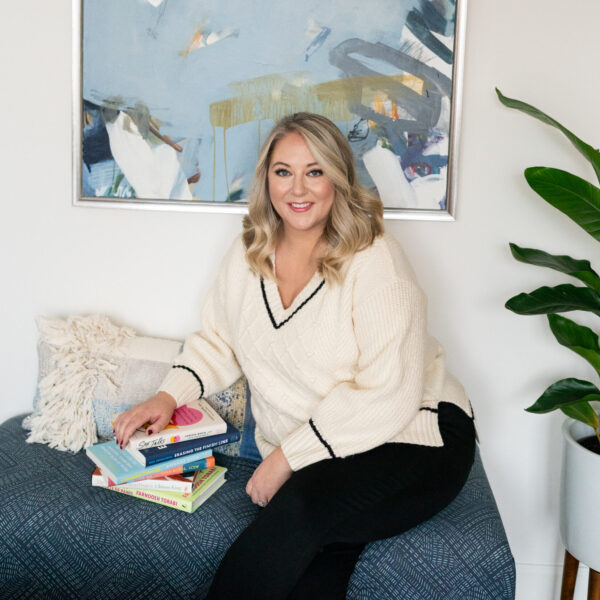
How to Break Barriers in Books
How to Break Barriers in Books
Many first-time authors struggle with how to break barriers in books while still honoring their personal boundaries.
How much of your story do you reveal?
How do you walk the fine line between vulnerability and self-preservation?
These questions naturally come up because it requires some level of transparency about your life to make the impact you want to with your book.
I put these questions to Farnoosh Torabi, author of multiple books, including the best-seller When She Makes More: The Truth About Love and Life for a New Generation of Women.
In her books and award-winning podcast, “So Money”, Farnoosh draws on her professional and personal experience and her relationship to money as a first-generation American.
In this post, you’ll learn how to break barriers in books drawing on Farnoosh’s experience and how she walked the fine line between relating to her audience and revealing too much.
I’ll also suggest some questions to consider as you share your personal stories.
Let’s get started.
Prefer to listen? Click here.
The Complexities In Decision-Making
Like many authors who write memoirs or prescriptive memoirs, Farnoosh’s books come from deeply personal experiences and realizations.
Reflecting on her best-selling book, When She Makes More (Avery, 2014), she opens up about breaking taboos by outearning her husband.
As a money expert, she wondered how other female breadwinners navigated the questions and silent judgments.
Writing what she knew meant involving significant people in her life, including her future husband and mother, in the story.
While discussing this with her peers, she realized the only way forward was to be transparent to authentically relate to her audience.
However, she also understood the delicate balance of deciding how much to reveal and how transparent to be.
While candidly writing about her upbringing and her parents’ opinions, she chose to emphasize the humorous and loving bond with her mother.
She respected her mom’s boundaries by acknowledging how her efforts had positively influenced her life.
Now a mother herself, she also considered her children as future readers of her book.
This prompted her to carefully consider the boundaries she would set, choosing not to include unnecessary intimate details in the overall narrative.
In the process, Farnoosh realized there were many rich stories to tell without oversharing.
Break Barriers Not Boundaries
If you’re struggling with what to include and leave out of your book, read on for some qualifying questions.
- How much should I reveal?
- Am I sharing enough to create a connection with readers while respecting my own privacy?
- Are there aspects of my personal experiences that are too sensitive or private to be shared?
- Am I telling the TRUTH about my experience?
2. What is the impact on the people mentioned in my book?
- How can I ensure a fair and balanced portrayal of relationships, acknowledging different perspectives and avoiding undue harm?
- Am I revealing dirty details that don’t need to be there for the reader?
3. How can selective storytelling enhance my narrative?
- Which stories should I include and exclude to create a compelling and cohesive narrative?
- Can I focus on essential stories that serve the overall narrative arc, rather than attempting to capture every detail of my life?
4. What are the most relevant and transformative aspects of my journey?
- How can I highlight these key moments, themes, and insights to create a more focused and impactful reading experience?
- How can I ensure that the narrative I present is engaging and meaningful to readers?
By asking these questions, you can navigate the delicate balance of transparency and privacy, craft a narrative that respects everyone involved, and create a compelling and meaningful reading experience through selective storytelling.
And you may also raise eyebrows, start conversations and break barriers!
How Sharing Your Story Can Break Barriers
Farnoosh embarked on a transformative journey, encountering varied reactions from the publishing industry and readers.
As she brought her unique perspective on women who earn more money than their partners to the forefront, she faced differing responses.
Some individuals within the publishing industry applauded Farnoosh’s boldness in addressing a long-overlooked and uncomfortable topic.
They recognized the importance of shedding light on the complexities within such relationships and the need for fresh perspectives that challenge the status quo.
They understood the potential for meaningful conversations that could spark change.
However, not everyone shared this enthusiasm.
Some agents and publishers hesitated, questioning the book’s marketability and its departure from traditional gender roles and societal expectations.
Given this reaction, Farnoosh had doubts about whether a broad audience would engage with the topic.
But despite mixed reactions, Farnoosh found encouragement and support from readers who deeply resonated with her message.
These women saw themselves reflected in its pages, and felt seen and understood.
They loved and appreciated the insights and strategies for navigating their challenges.
Farnoosh heard from readers who said that they were able to embrace their achievements and pursue their aspirations without guilt.
The book’s success was attributed in part to its relatability, which stemmed from Farnoosh’s transparency.
By breaking barriers and fostering a sense of community, she effectively served the readers who needed her book.
Farnoosh is doing it once again with her upcoming book A Healthy State of Panic (Atria, October 2023), where she discusses her very real relationship with fear, from childhood into adulthood, and how we can use it as a superpower.
In Closing: How to Break Barriers in Books
Farnoosh’s journey of self-reflection and exploration provides valuable insights for authors writing personal stories.
There’s a delicate balance of transparency and privacy that you must walk to make the impact you want.
Selective storytelling becomes a powerful tool for crafting a compelling narrative that resonates with readers.
The questions above will help you decide what belongs in your book, and what belongs on the cutting room floor!
By embracing transparency, setting boundaries, and honing storytelling skills, you can bring your story to the world, and break barriers, too!
You’ve got this!
Listen to Episode: 24. Breaking Barriers in Books and Beyond with Guest Farnoosh Torabi here.
Join me every month for the Aspiring Authors Assembly! It’s a free live training and discussion about all things books and writing. Click here to sign up.
Share this post!
The Truth About Imposter Syndrome & Inspiration
So, if you’re ready to kick imposter syndrome to the curb and grab your book-writing journey by the horns, you’re in the right place.
Rethinking Bestseller
Becoming a bestseller is a wonderful accomplishment, but for many who seek to see their books on shelves, it’s not the end-all-be-all, and for a vast majority, it’s a goal that can be more harmful than good.
Write a Book in 2024: Activate Your Plan
Activate your plan to write a book in 2024 by taking small, intentional steps that are proven to create momentum and inspiration.
Need a roadmap to publishing your book?
I’ve got you covered!
Enter your name and e-mail below and I’ll send you my roadmap for developing your book idea. You’ll learn how to attract the right agents and publishers, and be on your way to getting your book out into the world!


